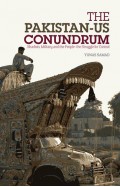- Home
- Business & Management
- Banking
- History
- Ancient & Civilization
- Persia - Land of Emperors And Kings
Persia - Land of Emperors And Kings
By: Iftikhar Salahuddin
-
Rs 6,400.00
- Rs 8,000.00
- 20%
You save Rs 1,600.00.
Due to constant currency fluctuation, prices are subject to change with or without notice.
Persia - Land of Emperors and Kings begins in the 6th century BCE with the eponymous Achaemenid Emperor Cyrus the Great, and spans over 2500 years of fascinating history. After Cyrus, Darius I extended the empire from the Aegean Sea in the west to the shores of the Indus River in the east. He built the iconic city Persepolis which was wantonly destroyed by Alexander of Mesopotamia. The tumultuous history of Persia witnesses the collapse of Hellenism, the rise of the Parthians and the zenith of Zoroastrianism during the Sassanid rule. The cataclysmic event of Persian history occurred in the 7th century when the invading Arabs introduced a new faith and a new language, whose Arabic script was readily adopted by Persian scholars. The fabled cities of Bukhara, Samarkand, Isfahan and Shiraz evolved as the cultural capitals of the Persian empire. We meet the savants Imam Bukhari, Avicenna, and Al Biruni in Central Asia, and Persia's beloved poets Hafiz, Saadi, Omar Khayyam, Rumi and Ferdawsi, whose prose and poetry kindled the love of Persians for their culture and their fragrant language. The narrative concludes with the fall of the Pahlavi monarchy in 1979.
Persia - Land of Emperors and Kings begins in the 6th century BCE with the eponymous Achaemenid Emperor Cyrus the Great, and spans over 2500 years of fascinating history. After Cyrus, Darius I extended the empire from the Aegean Sea in the west to the shores of the Indus River in the east. He built the iconic city Persepolis which was wantonly destroyed by Alexander of Mesopotamia. The tumultuous history of Persia witnesses the collapse of Hellenism, the rise of the Parthians and the zenith of Zoroastrianism during the Sassanid rule. The cataclysmic event of Persian history occurred in the 7th century when the invading Arabs introduced a new faith and a new language, whose Arabic script was readily adopted by Persian scholars. The fabled cities of Bukhara, Samarkand, Isfahan and Shiraz evolved as the cultural capitals of the Persian empire. We meet the savants Imam Bukhari, Avicenna, and Al Biruni in Central Asia, and Persia's beloved poets Hafiz, Saadi, Omar Khayyam, Rumi and Ferdawsi, whose prose and poetry kindled the love of Persians for their culture and their fragrant language. The narrative concludes with the fall of the Pahlavi monarchy in 1979.
Jerusalem A Journey Back In Time
By: Iftikhar Salahuddin
Rs 4,000.00 Rs 5,000.00 Ex Tax :Rs 4,000.00
Persia - Land of Emperors And Kings
By: Iftikhar Salahuddin
Rs 6,400.00 Rs 8,000.00 Ex Tax :Rs 6,400.00
Zubin Mehta: A Musical Journey (An Authorized Biography)
By: VOID - Bakhtiar K. Dadabhoy
Rs 472.50 Rs 1,050.00 Ex Tax :Rs 472.50
The Last Mughal: The Fall of a Dynasty, Delhi, 1857
By: William Dalrymple
Rs 3,036.00 Rs 3,795.00 Ex Tax :Rs 3,036.00
Jerusalem A Journey Back In Time
By: Iftikhar Salahuddin
Rs 4,000.00 Rs 5,000.00 Ex Tax :Rs 4,000.00
The Golden Road - How Ancient India Transformed the World
By: William Dalrymple
Rs 3,836.00 Rs 4,795.00 Ex Tax :Rs 3,836.00
A Grand Tour of the Roman Empire by Marcus Sidonius Falx
By: Dr. Jerry Toner
Rs 2,476.00 Rs 3,095.00 Ex Tax :Rs 2,476.00
The Children of Ash and Elm: A History of the Vikings
By: Neil Price
Rs 2,996.25 Rs 3,995.00 Ex Tax :Rs 2,996.25
The Origins of Political Order From Prehuman Times to the French RevolutioN
By: Francis Fukuyama
Rs 3,116.00 Rs 3,895.00 Ex Tax :Rs 3,116.00
Manning Up: How the Rise of Women Has Turned Men into Boys
By: Kay Hymowitz
Rs 646.75 Rs 995.00 Ex Tax :Rs 646.75
The Obama Syndrome: Surrender At Home War Abroad
By: Tariq Ali
Rs 1,036.00 Rs 1,295.00 Ex Tax :Rs 1,036.00
The Quest For Meaning: Developing A Philosophy Of Pluralism
By: Tariq Ramadan
Rs 1,116.00 Rs 1,395.00 Ex Tax :Rs 1,116.00
The Pakistan US Conundrum Jihadists The Military And The People The Struggle For Control
By: Yunas Samad
Rs 1,116.00 Rs 1,395.00 Ex Tax :Rs 1,116.00
An Enemy We Created: The Myth Of The Taliban Al Qaeda Merger In Afghanistan 19702010
By: Alex Strick van Linschoten
Rs 3,412.50 Rs 5,250.00 Ex Tax :Rs 3,412.50
WikiLeaks: Inside Julian Assanges War on Secrecy
By: David Leigh & Luke Harding
Rs 552.50 Rs 850.00 Ex Tax :Rs 552.50
The Last Mughal: The Fall of a Dynasty, Delhi, 1857
By: William Dalrymple
Rs 3,036.00 Rs 3,795.00 Ex Tax :Rs 3,036.00
Jerusalem A Journey Back In Time
By: Iftikhar Salahuddin
Rs 4,000.00 Rs 5,000.00 Ex Tax :Rs 4,000.00
The Golden Road - How Ancient India Transformed the World
By: William Dalrymple
Rs 3,836.00 Rs 4,795.00 Ex Tax :Rs 3,836.00
A Grand Tour of the Roman Empire by Marcus Sidonius Falx
By: Dr. Jerry Toner
Rs 2,476.00 Rs 3,095.00 Ex Tax :Rs 2,476.00
The Children of Ash and Elm: A History of the Vikings
By: Neil Price
Rs 2,996.25 Rs 3,995.00 Ex Tax :Rs 2,996.25
No recently viewed books available at the moment.
Zubin Mehta: A Musical Journey (An Authorized Biography)
By: VOID - Bakhtiar K. Dadabhoy
Rs 472.50 Rs 1,050.00 Ex Tax :Rs 472.50
Jerusalem A Journey Back In Time
By: Iftikhar Salahuddin
Rs 4,000.00 Rs 5,000.00 Ex Tax :Rs 4,000.00
Persia - Land of Emperors And Kings
By: Iftikhar Salahuddin
Rs 6,400.00 Rs 8,000.00 Ex Tax :Rs 6,400.00
The Last Mughal: The Fall of a Dynasty, Delhi, 1857
By: William Dalrymple
Rs 3,036.00 Rs 3,795.00 Ex Tax :Rs 3,036.00
Jerusalem A Journey Back In Time
By: Iftikhar Salahuddin
Rs 4,000.00 Rs 5,000.00 Ex Tax :Rs 4,000.00
The Golden Road - How Ancient India Transformed the World
By: William Dalrymple
Rs 3,836.00 Rs 4,795.00 Ex Tax :Rs 3,836.00
A Grand Tour of the Roman Empire by Marcus Sidonius Falx
By: Dr. Jerry Toner
Rs 2,476.00 Rs 3,095.00 Ex Tax :Rs 2,476.00
The Children of Ash and Elm: A History of the Vikings
By: Neil Price
Rs 2,996.25 Rs 3,995.00 Ex Tax :Rs 2,996.25











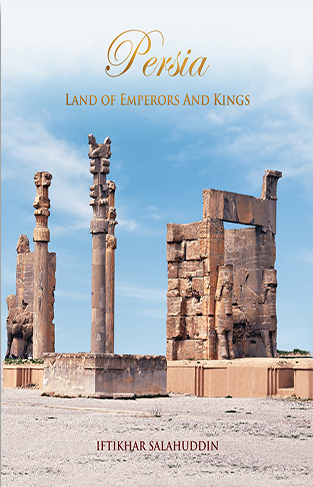

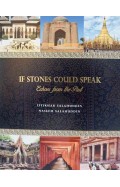
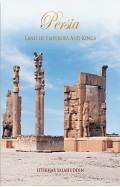
-120x187.jpg?q6)






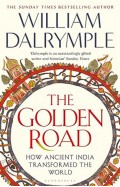
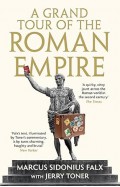
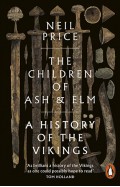
-120x187.jpg?q6)



-120x187.jpg?q6)
